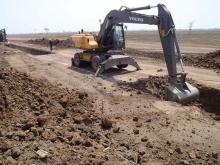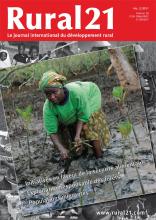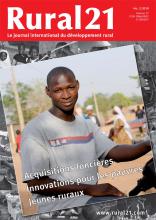Land Library Search
Through our robust search engine, you can search for any item of the over 73,000 highly curated resources in the Land Library.
If you would like to find an overview of what is possible, feel free to peruse the Search Guide.
/ library resources
Showing items 1 through 9 of 15.The dilemma between preserving farmland and urbanization has attracted many policymakers’ attention. One sound solution that has been practiced in several developed countries is the “transfer of development rights” (TDR).
Cover crops are considered to be beneficial for multiple ecosystem services, and they have been widely promoted through the Common Agricultural Policy (CAP) in the EU and Farm Bill Conservation Title Programs, such as the Environmental Quality Incentives Program (EQIP), in the USA.
Agroforestry, relative to conventional agriculture, contributes significantly to carbon sequestration, increases a range of regulating ecosystem services, and enhances biodiversity.
Farmland ownership fragmentation is one of the important drivers of land-use changes. It is a process that in its extreme form can essentially limit land management sustainability.
The buying up of farmland by international investors is viewed highly critically. However, sweeping judgements could be inappropriate, as our author demonstrates with survey results from Ethiopia and Uganda.
In parts of the northern hemisphere, many pollinator species are in decline, with potential adverse implications for pollination and the ecosystem service of food production.
Au Burkina Faso, le potentiel en terres arables à vocation agricole est épuisé. À l’avenir, la population en rapide expansion ne pourra être nourrie que s’il est possible d’accroître les rendements sur les terres cultivées existantes.
Burkina Faso is already using all its possible farmland. In future the only way to feed the rapidly growing population will be by increasing yields on existing land. Building stone contour lines enables rainwater to be better used and slows erosion.
Si les investissements étrangers directs (IED) dans les terres arables peuvent stimuler la croissance économique, ils peuvent aussi, le cas échéant, affecter de manière négative la situation des revenus et la sécurité alimentaire de la population locale.





